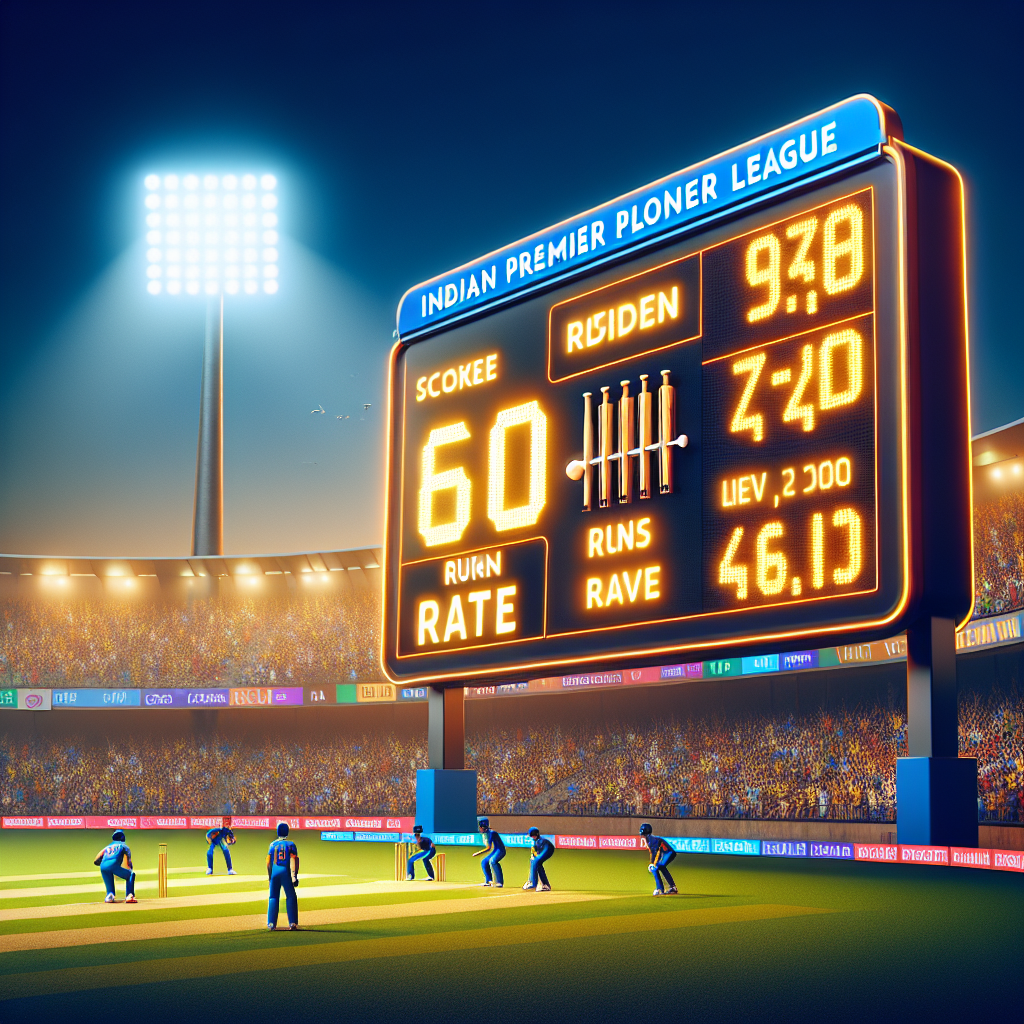
The Indian Premier League (IPL), sponsored by Tata, is not just a cricket tournament; it is a festival that captivates millions of fans worldwide. One of the most critical aspects of the game that often determines the outcome of matches is the run rate. Understanding the run rate in the context of the IPL can provide valuable insights into team strategies, player performances, and the overall dynamics of the game. This article delves into the intricacies of the Tata IPL run rate, exploring its significance, factors influencing it, and its impact on the tournament.
Understanding Run Rate in Cricket
Before diving into the specifics of the IPL, it is essential to understand what run rate means in cricket. The run rate is a measure of how quickly a team scores runs. It is calculated by dividing the total number of runs scored by the number of overs faced. A higher run rate indicates a more aggressive and successful batting performance.
Importance of Run Rate
The run rate is crucial for several reasons:
- Match Outcome: A higher run rate can lead to a more significant total score, increasing the chances of winning.
- Net Run Rate (NRR): In tournaments like the IPL, where teams are often tied on points, the NRR can be a deciding factor for playoff qualifications.
- Strategic Planning: Teams plan their innings based on the required run rate, especially in chase scenarios.
Factors Influencing Run Rate in the IPL
Several factors can influence a team's run rate in the IPL:
Team Composition
The composition of a team, including the balance between batsmen and bowlers, can significantly impact the run rate. Teams with explosive batsmen like Chris Gayle or AB de Villiers can maintain a high run rate, while those with a more conservative lineup might focus on building innings steadily.
Pitch Conditions
The nature of the pitch plays a crucial role in determining the run rate. Flat pitches with little assistance for bowlers often result in higher run rates, while pitches that offer turn or seam movement can restrict scoring.
Match Situation
The context of the match, such as whether a team is batting first or chasing a target, can influence the run rate. Teams chasing a large total might adopt a more aggressive approach, while those defending a score might focus on preserving wickets.
Weather Conditions
Weather conditions, such as humidity and dew, can affect the run rate. Dew can make the ball slippery, aiding batsmen in scoring runs more freely during night matches.
Case Studies: Memorable IPL Matches and Run Rates
To understand the impact of run rate in the IPL, let's examine some memorable matches:
2013: Chennai Super Kings vs. Royal Challengers Bangalore
In a high-scoring encounter, Chennai Super Kings chased down a target of 206 set by Royal Challengers Bangalore. The match was a testament to the importance of maintaining a high run rate, with CSK achieving a run rate of 10.3 to secure victory.
2019: Kolkata Knight Riders vs. Mumbai Indians
Kolkata Knight Riders posted a massive total of 232, thanks to Andre Russell's explosive innings. The high run rate of 11.6 was instrumental in their victory, showcasing the impact of aggressive batting on match outcomes.
Strategies to Improve Run Rate
Teams employ various strategies to enhance their run rate:
Powerplay Utilization
The first six overs, known as the powerplay, are crucial for setting a solid foundation. Teams aim to maximize scoring during this period by taking advantage of fielding restrictions.
Middle Overs Acceleration
While the middle overs are often seen as a phase for consolidation, successful teams find ways to maintain momentum and keep the scoreboard ticking.
Death Overs Exploitation
The final overs of an innings, known as the death overs, are critical for boosting the run rate. Teams with strong finishers like MS Dhoni or Kieron Pollard can significantly impact the final score.
Impact of Run Rate on IPL Standings
The run rate's influence extends beyond individual matches to affect the overall standings in the IPL:
Net Run Rate (NRR) as a Tiebreaker
In the IPL, teams often find themselves tied on points at the end of the league stage. The NRR serves as a tiebreaker, determining which teams advance to the playoffs. A higher NRR can be the difference between qualifying for the next stage or being eliminated.
Psychological Advantage
Maintaining a high run rate can provide a psychological edge over opponents. Teams known for their aggressive scoring can intimidate rivals, forcing them to alter their strategies.
Statistical Insights: IPL Run Rate Trends
Analyzing run rate trends over the years can offer valuable insights:
Increasing Run Rates
Over the years, the average run rate in the IPL has steadily increased, reflecting the evolution of T20 cricket and the emphasis on aggressive batting.
Team-Specific Trends
Certain teams, like Mumbai Indians and Chennai Super Kings, have consistently maintained high run rates, contributing to their success in the tournament.
Conclusion: The Significance of Run Rate in the Tata IPL
The run rate is a critical component of the Tata IPL, influencing match outcomes, team strategies, and tournament standings. Understanding the factors that affect run rate and employing strategies to optimize it can provide teams with a competitive edge. As the IPL continues to evolve, the importance of run rate will only grow, making it a key focus for players, coaches, and analysts alike.
In summary, the run rate is not just a statistic; it is a reflection of a team's approach to the game. By mastering the art of maintaining a high run rate, teams can enhance their chances of success in the thrilling and unpredictable world of the IPL.





